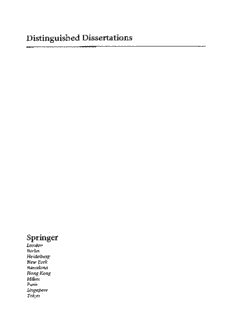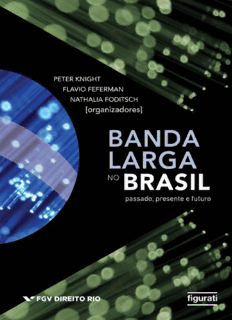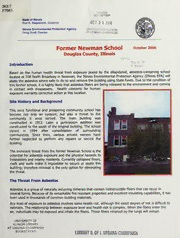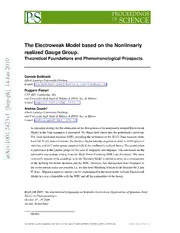
Randomized Algorithms: Approximation, Generation and Counting PDF
Preview Randomized Algorithms: Approximation, Generation and Counting
Distinguished Dissertations Springer London Berlin Heidelberg New York Barcelona Hong Kong Milan Paris Singapore Tokyo Other titles published in this Series: Extensional Constructs in Intensional Type Theory Martin Hoffman Search and Planning Under Incomplete Information: A Study Using Bridge Card Play Ian Frank Theorem Proving with the Real Numbers John Harrison Games and Full Abstraction for a Functional Metalanguage with Recursive Types Guy McCusker Hardware Evolution: Automatic Design of Electronic Circuits in Reconfigurable Hardware by Artificial Evolution Adrian Thompson Models ofS haring Graphs: A Categorical Semantics ofl et and letrec Masahito Hasegawa Large Scale Collaborative Virtual Environments Chris Greenhalgh Architecture-Independent Loop Parallelisation Radu Calinescu User-Developer Cooperation in Software Development Eamon O'Neill Russ Bubley Randomized Algorithms: Approximation, Generation, and Counting , Springer Russ Bubley, MA, PhD University of Leeds, Leeds, UK Series Editor Professor C.J. van Rijsbergen Department of Computing Science, University of Glasgow, GI2 8RZ, UK ISBN-13:97S-1-4471-llS0-1 Springer-Verlag London Berlin Heidelberg British Library Cataloguing in Publication Data Bubley, Russ Randomized algorithms: approximation. generation and counting. -(Distinguished dissertations) I.Probabilities 2.Stochastic approximation 3.Algorithms 4.Computer science -Mathematics I.Title S19.2 ISBN-13:97S-1-4471-llS0-1 Library of Congress Cataloging-in-Publication Data Bubley, Russ. 1974- Randomized algorithms: approximation, generation. and counting / Russ Bubley. p. em. --(Distinguished dissertaions, ISSN 1439-9768) Includes bibliographical references. ISBN-13:978-1-4471-1180-1 e-ISBN-13: 978-1-44 71-069S-1 DOl: 1O.1007/978-1-4471-069S-1 1. Markov processes. 2. Monte Carlo method 3. Computational complexity. I. Title. II. Distinguished dissertaions (Springer-Verlag) QA274.2 .B82 2000 SI9.2'33--dc21 00-034426 Apart from any fair dealing for the purposes of research or private study, or criticism or review, as permitted under the Copyright, Designs and Patents Act 1988, this publication may only be reproduced. stored or transmitted. in any form or by any means, with the prior permission in writing of the publishers, or in the case of reprographic reproduction in accordance with the terms of licences issued by the Copyright Licensing Agency. Enquiries concerning reproduction outside those terms should be sent to the publishers. © Springer-Verlag London Limited 2001 Softcover reprint of the hardcover 1st edition 2001 The use of registered names, trademarks etc. in this publication does not imply, even in the absence of a specific statement, that such names are exempt from the relevant laws and regulations and therefore free for general use. The publisher makes no representation, express or implied. with regard to the accuracy of the information contained in this book and cannot accept any legal responsibility or liability for any errors or omissions that may be made. Typesetting: Camera-ready by author 34/3830-543210 Printed on acid-free paper SPIN 10767866 Dedication For those closest to me. Preface What This Book Is In this book we concern ourselves primarily with two problems of fine pedigree: counting and generation. Given a finite set of combinatorial objects, we wish to dis cover how many objects there are in it, and to pick one uniformly at random. These two operations are of fundamental importance to discrete mathematics and probability. We also consider the generalization of these problems to the setting where each object has a positive weight associated with it. The "counting" problem is then the summation of these weights over all the objects, and the generation (or sampling) problem is to sample an object at random with probability proportional to the weights. Indeed in Section 4.3 we consider a further generalization to the case where the set of objects is no longer finite, and is instead some subset of]Rn, and the counting problem becomes the integration of the weights, and the generation problem is to sample an element with density proportional to the weights. The fundamental problem with naIve solutions to these problems is one of time: simple algorithms can take far too long - far longer than we might be prepared to wait. It is normal in computational complexity theory to regard a problem as tractable if we know of an algorithm that takes time that is bounded above by some polynomial of the size of the problem description; naive solutions may easily grow exponentially instead. Unfortunately, there are many counting problems that are not known to be tract able; indeed, for many counting problems, there is complexity theoretic evidence to suggest strongly that they are, in fact, intractable. We need therefore to relax our demands in these cases, and ask for only an approx imate answer. We must be satisfied to have a counting solution that is an approxima tion to the true answer. Also, we may be willing to accept the generation of an object from some distribution that is only approximately proportional to the weights - es pecially if with high probability we would be unable to tell the difference between the two distributions with a tractable algorithm. We will thus primarily be interested in developing such approximation algorithms for cases in which exact counting is intractable in some appropriate sense - although we may still be interested in other cases, where approximation algorithms merely provide a faster solution than the slower (but tractable) exact solution. Consequently, we prove many results throughout this book to show that certain counting problems viii Preface are intractable, before illustrating approximation algorithms for them. Up to this point, we have not described any connexion between these two appar ently disparate problems, counting and generation. The reason for this is simple: the most powerful known technique for approximate counting is the Markov chain Monte Carlo method - at its heart it is driven by a requirement for generation - and approx imate sampling is as good for this task as exact generation. Conversely, approximate counting can be used as a powerful technique to approximately sample. How then do we achieve at least approximate generation? There are currently only two known techniques: direct sampling and Markov chain simulation, the latter being far more powerful. Markov chain simulation consists of picking one object to start with, and then trading this object in for a new (random) one - typically one that is in some sense very similar to our original object; we then repeat this "trading in" step many times. If we have taken enough of these "trading in" steps, and have chosen the probability distribution for each such step in the correct manner, then the final object will have been generated approximately from our desired distribution. It transpires that the main difficulty in the analysis is typically determining just how many steps of the Markov chain simulation constitute "enough". We focus in this book on a classical technique known as coupling, which was introduced by Doeblin in the 1930s. This particular technique had until recently been side-lined in the arena of approximate generation, as it was believed to be too difficult to apply. Jerrum [66] wrote [The] "coupling" argument ... is very successful in the context of highly symmetric Markov chains ... , but seems very difficult or even im- possible to apply to the kind of Markov chains which arise in the analysis of Monte Carlo algorithms. It transpires that analysis by coupling can in fact be achieved, and we give sev eral non-trivial applications of a "bare-hands" approach to coupling here. We go on to develop a weakening of the coupling method that makes application substantially easier; this we name path coupling. We illustrate the utility of this new method by considering a wide variety of applications. What This Book Is Not In this book we do not consider approximation algorithms for optimization problems; this is a very active area of research and is outside the scope of this work. The inter ested reader should consult a recent review, such as [9, 11]. Organization of This Book In Chapter I, we introduce the mathematical setting within which the rest of this book is set. We look at computational complexity theory, probability - with particular Preface ix attention paid to Markov chains - and review some definitions from graph theory. We also introduce some basic results which we will use later on in the book. In Chapter 2, we consider methods for sampling and approximately sampling from a (possibly weighted) set of combinatorial objects. We review numerous analytical techniques for analyzing the Markov chain method, and introduce a new technique into this domain: Dobrushin's uniqueness criterion. In Chapter 3, we consider methods for approximate counting, and focus on utiliz ing the Markov chain method for sampling as an aid to this end. In Chapter 4, we consider three new direct applications of the coupling method to analyze Markov chain approximate samplers, and show how two of these sampling algorithms may be used to construct approximate counting algorithms. In the Intermezzo, we introduce a new technique for applying the coupling method. This we name path coupling. We go on to prove several results that make subsequent applications of the path coupling method much simpler. In Chapter 5, we go on to use the path coupling technique for a wide variety of problems; we prove both results on new Markov chains, and improve upon previous results for Markov chains introduced elsewhere. In Chapter 6, we consider several directions in which the work of this book could be extended, and offer possible ways in which these extensions might be achieved. In Appendix A, we give an application of Dobrushin's uniqueness criterion to a Markov chain problem from theoretical computer science and statistical physics. In Appendix B, we review the current state of the knowledge of a variety of exact and approximate counting problems related to SAT, the progenitor of modern com plexity theory problems. In Appendix C, we prove the equivalence of a natural algorithmic metric, trans position distance, to a classical metric, Spearman's Jootrule. Acknowledgements Some portions of the work presented in this book have been published elsewhere. Much of Section 4.3 has appeared in Random Structures and Algorithms (volume 12, pages 213-235, 1998), under the title "An Elementary Analysis of a Procedure for Sampling Points in a Convex Body" (co-authored with Martin Dyer and Mark Jer rum). Copyright © 1997 John Wiley & Sons, Inc. An earlier version of this paper appeared as a technical report from the Department of Computer Science, Univer sity of Edinburgh (Report ECS-LFCS-96-343, April 1996), under the title "A New Approach to Polynomial-Time Generation of Random Points in Convex Bodies". Much of Section 4.2 will appear in the SIAM Journal on Computing under the title "Graph Orientations with No Sink and an Approximation Algorithm for a Hard Case of #SAT" (co-authored with Martin Dyer). This paper appeared earlier with a similar title in the Proceedings of the Eighth Annual ACM-SIAM Symposium on Discrete Algorithms (New Orleans, Louisiana, 5-7 January 1997, pages 248-257). Copyright © 1997 SIAM. Portions of the Intermezzo and Chapter 5 have appeared in the Proceedings of the 38th Annual Symposium on Foundations of Computer Science (Miami Beach, Florida, 20-22 October 1997, pages 223-231), under the title "Path Coupling: A Technique for Proving Rapid Mixing in Markov Chains" (co-authored with Martin Dyer). Copy right © 1997 IEEE. An earlier version of this paper, which also included much of Section 2.3.2, appeared as a technical report from the School of Computer Studies, University of Leeds (Report 97.04, January 1997), under the title "Path Coupling, Dobrushin Uniqueness, and Approximate Counting". Portions of Section 5.7 appeared in a special issue of Discrete Mathematics (volume 201, pages 81-88, 1999) under the title "Faster Random Generation of Linear Ex © tensions" (co-authored with Martin Dyer). Copyright 1999 Elsevier Science B.Y. This paper appeared earlier in the Proceedings of the Ninth Annual ACM-SIAM Sym posium on Discrete Algorithms (San Francisco, California, 25-27 January 1998, pages 350-354). Copyright © 1998 SIAM. An earlier version of this paper appeared as a technical report from the School of Computer Studies, University of Leeds (Report 97.41, August 1997). An expanded version of Section 5.10 appeared in the SIAM Journal on Computing (volume 29, pages 387-400, 1999) under the title "On Approximately Counting Col- xii Acknowledgements ourings of Small Degree Graphs" (co-authored with Martin Dyer, Catherine Green hill, and Mark Jerrum). This paper appeared earlier in the Proceedings of the Ninth Annual ACM-SIAM Symposium on Discrete Algorithms (San Francisco, California, 25-27 January 1998, pages 355-363), under the title "Beating the 2~ Bound for Ap proximately Counting Colourings: A Computer-Assisted Proof of Rapid Mixing" (co authored with Martin Dyer and Catherine Greenhill). Copyright © 1998 SIAM. This research was funded by an EPSRC grant and partially by the ESPRIT project, RAND2.
Description:The list of books you might like

The Spanish Love Deception

Do Epic Shit

$100m Offers

Better Than the Movies

The GPS Space Service Volume

Banda Larga no Brasil : passado, presente e futuro

Greek Government Gazette: Part 1, 2008 no. 31

NASA Technical Reports Server (NTRS) 20100017776: Results and Analysis from Space Suit Joint Torque Testing

Extraordinary Gazette of India, 2009, No. 107

DTIC ADA567650: Al/CuxO/Cu Memristive Devices: Fabrication, Characterization, and Modeling

Brief Couples Therapy Homework Planner (PracticePlanners)

The Winds of Chance by Rex Beach

El género Houssayanthus (Sapindaceae) en México

Soil Survey of Nez Perce National Forest Area, Idaho (2006)

bahçecilik kalanchoe yetiştiriciliği

Goniothalamus elegans Ast (Annonaceae), a New Record for Thailand

NASA Technical Reports Server (NTRS) 20060022150: Wind Tunnel Results of the B-52B with the X-43A Stack

C78/50-59 C78/50 - AALT





![[Cerrahi Nöroanatomi] Subtalamik NukleuS aNatomiSi ve DeriN beyiN StimulaSyoN ile aNatomik ... book image](https://cdn.pdfdrive.to/media/content/thumbnails/ad3417a2-34a3-4d51-9f06-820915e9bf90.webp)
